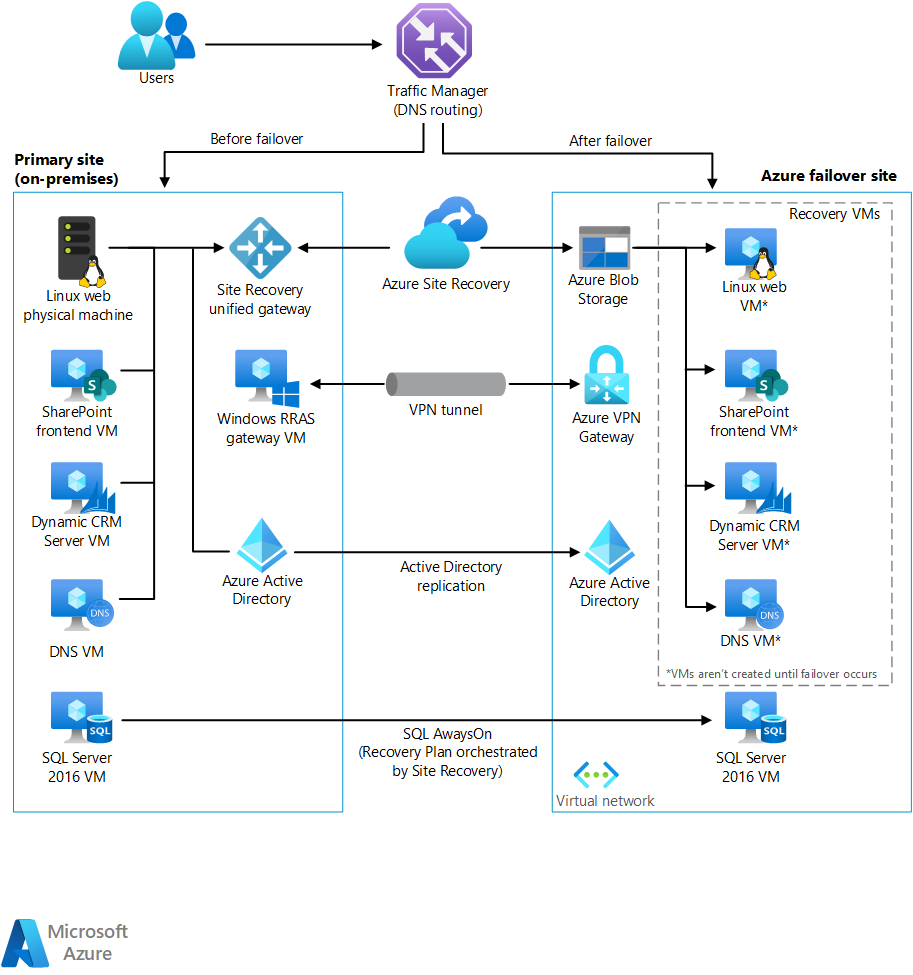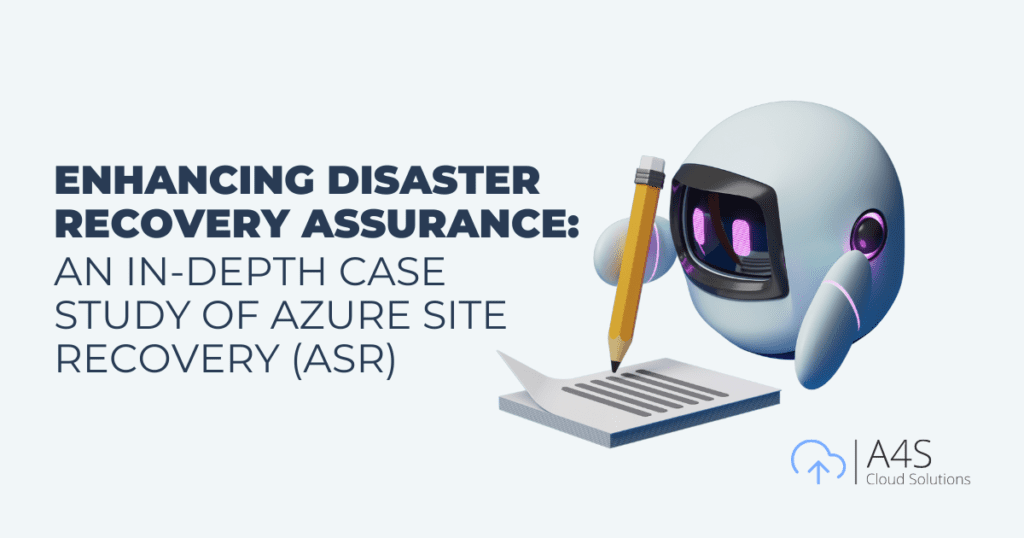Effective disaster recovery (DR) planning is an indispensable aspect of ensuring business continuity in the face of unforeseen disruptions. While the importance of DR is widely acknowledged, organisations often grapple with challenges such as routine testing, maintenance, cost considerations, and the assurance that the system will perform seamlessly during an actual fail-over event. This case study delves into the strategic implementation of Azure Site Recovery (ASR) by the A4S Cloud Solutions team, offering a comprehensive solution to address these challenges for South Lakes Housing.
For South Lakes Housing, ensuring robust disaster recovery posed specific challenges, including:
The A4S Cloud Solutions team responded to SLH’s challenges by implementing Azure Site Recovery (ASR), a Microsoft Azure service designed to safeguard and recover critical workloads effectively. ASR forms a pivotal part of the overall solution, complemented by Azure Virtual Desktop (AVD), networking infrastructure for continued connectivity, and meticulously documented processes to guide the team during an actual DR event.
A4S undertook a comprehensive rehearsal of the ASR DR solution, providing SLH with the necessary assurances regarding the efficacy of the system.

ASR brought forth a plethora of benefits for SLH:
For a more comprehensive list of ASR benefits, refer to Azure Site Recovery Benefits.
South Lakes Housing is dedicated to delivering quality, affordable homes to its tenants. With a focus on affordable rents and substantial investments in improving accommodations, SLH plays a critical role in providing essential services to its local community. For more information, visit SLH Website.
“The A4S team recently conducted a comprehensive disaster recovery rehearsal using Azure Site Recovery, and the results were beyond our expectations. The entire process was seamless, with critical systems successfully replicated to Azure without disruptions. The automated failover worked flawlessly, allowing us to simulate a real-world scenario with minimal downtime.
Our experience with A4S and Azure Site Recovery has been outstanding. The rapid deployment, security features, robust capabilities of ASR, and professionalism of A4S have positioned us for a resilient and efficient disaster recovery strategy. We are confident that our critical applications and data are in safe hands with A4S and Azure Site Recovery.”
In conclusion, the strategic deployment of Azure Site Recovery by the A4S Cloud Solutions team has proven instrumental in fortifying South Lakes Housing’s disaster recovery capabilities. By addressing the challenges associated with routine testing, maintenance, and cost control, ASR has emerged as a cost-effective and efficient solution. This case study exemplifies how organisations can leverage cutting-edge technologies to establish a resilient and effective disaster recovery strategy, ensuring uninterrupted business operations even in the face of unforeseen disruptions.
Azure Site Recovery (ASR) offers several significant benefits. First and foremost, it helps minimise downtime by keeping your applications running during outages through automated replication of your virtual machines and physical servers to a secondary location. It’s also a cost-effective solution because it operates on a pay-as-you-go model, which reduces the need for a secondary datacenter and the associated operational costs.
ASR simplifies management by integrating with existing systems and offering centralised management through the Azure portal, making the process of setting up and managing disaster recovery straightforward. Additionally, Azure ensures compliance and security by providing robust security features and compliance certifications, ensuring your data is protected and meets regulatory requirements. Lastly, ASR is scalable, allowing you to easily adjust your disaster recovery solution as your business grows without worrying about capacity constraints.
The costs of Azure Site Recovery are influenced by several factors. The primary cost component is replication, which depends on the number of instances being replicated; you are billed based on the number of virtual machines or physical servers you protect. Storage costs are incurred for the storage used to hold the replicated data, including both primary and secondary locations.
While inbound data transfers to Azure are free, outbound data transfers from Azure are billed according to the standard data transfer rates. During a failover, you will also incur costs for the compute resources used to run your applications in the secondary location. For an exact pricing estimate, it is recommended to use the Azure Pricing Calculator.
Azure Site Recovery does have some limitations. The initial setup can be complex, especially for businesses with extensive infrastructure and applications, requiring careful planning and configuration. ASR relies on internet connectivity, meaning any network issues can affect the replication and failover processes.
While ASR is cost-effective, managing costs can be challenging, particularly with large-scale deployments and frequent data transfers. Additionally, not all applications may be compatible with ASR; custom applications may require additional configuration or may not be supported at all.
Azure Disaster Recovery is essential for ensuring business continuity. It helps keep your business operations running uninterrupted during disasters, thereby minimising downtime and financial loss. It also provides a robust solution for protecting your critical data and applications, allowing for quick recovery in case of any data loss or corruption.
Moreover, many industries require businesses to have a disaster recovery plan in place to meet regulatory requirements, and Azure Disaster Recovery helps you comply with these regulations. Finally, knowing that your business is protected against unforeseen events provides peace of mind, allowing you to focus on your core operations.
Choosing Azure Disaster Recovery provides several advantages. It is an integrated solution that seamlessly works with your existing IT infrastructure, providing a unified solution for both cloud and on-premises environments. It offers flexibility in choosing your recovery destination, whether it’s another Azure region, your own data center, or a third-party hosting provider.
Azure’s global network of data centers ensures high availability and reliability, giving you confidence that your disaster recovery plan will work when needed. The advanced features of Azure, such as automation, orchestration, and testing of disaster recovery plans, ensure that you are always prepared for any disaster. Lastly, Azure’s pay-as-you-go model and scalability make it a cost-efficient choice for businesses of all sizes, providing robust disaster recovery without the need for significant upfront investment.

To see the wide range of projects we’ve worked on, click here to read other case studies.